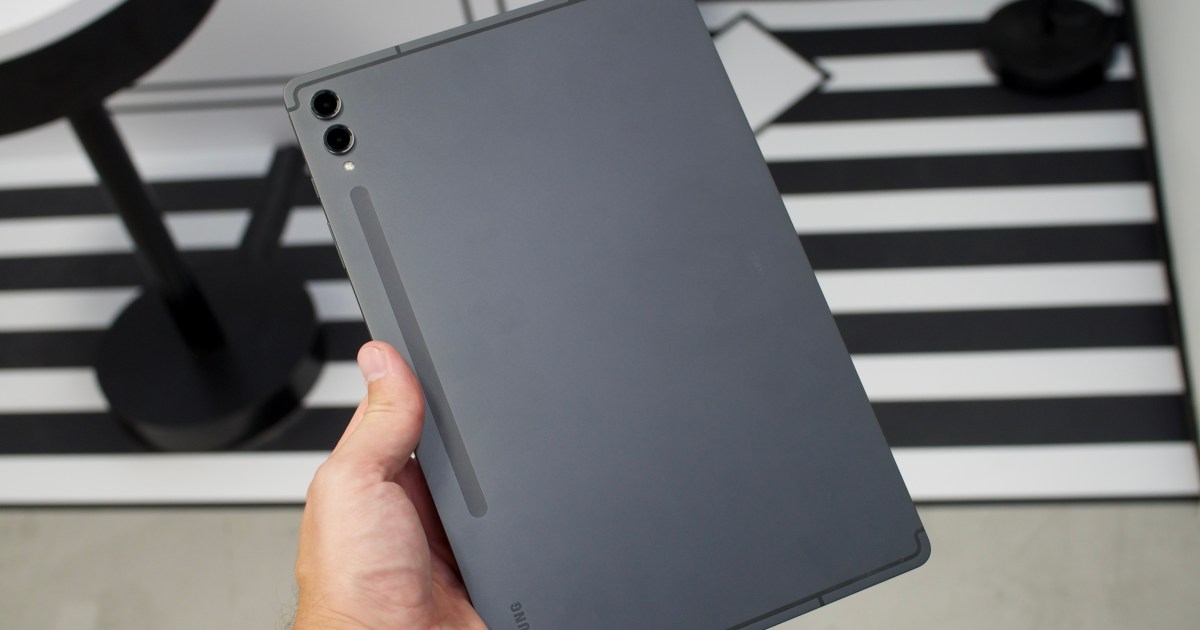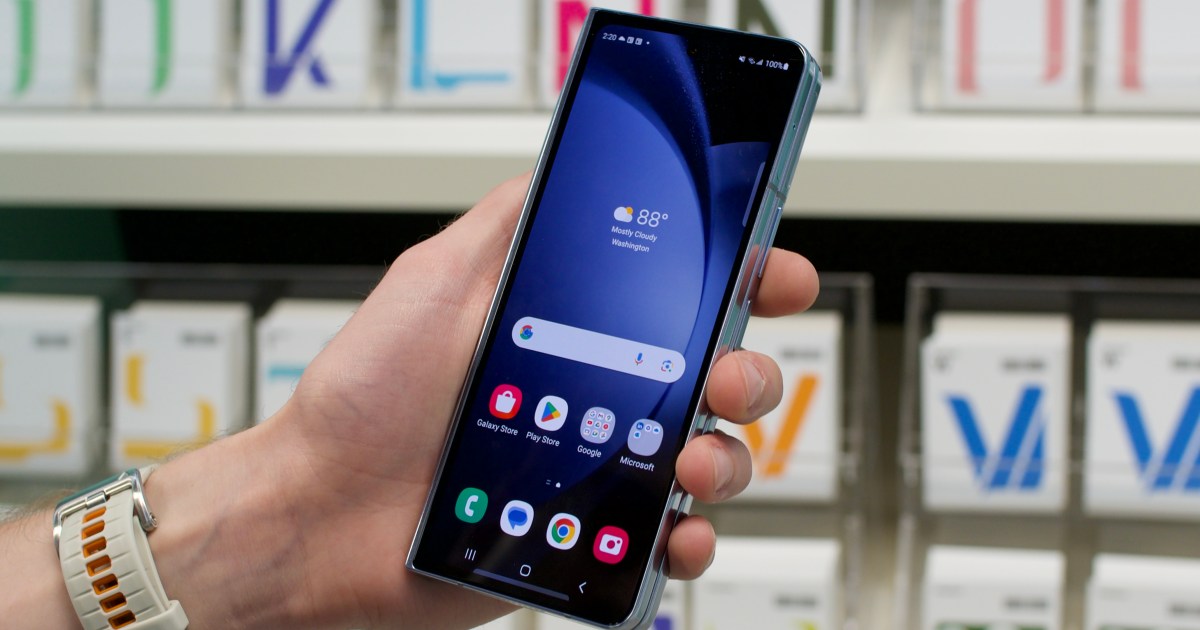Samsung Galaxy Tab S9 Water-resistant S Pens and AMOLED displays for all.
Samsung Galaxy Tab S9 Water-resistant S Pens and AMOLED displays for all.
A Closer Look at Samsung Galaxy Tab S9: The Perfect Android AMOLED Tablets for Media Lovers
It’s been an exciting year for Android tablet enthusiasts, with a wide range of options available to choose from. From the Google Pixel Tablet to the OnePlus Pad to Lenovo’s Tab Extreme, there have never been better choices. Samsung, a longstanding player in the Android tablet market, has now unveiled its highly anticipated Galaxy Tab S9 series, set to be released on August 11th. These tablets showcase Samsung’s AMOLED displays and come at higher price points. In a way, they feel like a precursor to the expected OLED iPad Pros from Apple.
I had the opportunity to get a sneak peek at the Galaxy Tab S9 Plus and S9 Ultra ahead of Samsung’s Unpacked event, and I must say, I was quite impressed, despite the lack of significant changes. The Plus and Ultra models boast screen sizes of 12.4 inches and 14.6 inches, respectively, while the entry-level S9 features an 11-inch display. These screens are truly massive, and the Ultra, in particular, feels like Samsung detached the top half of a laptop and transformed it into a tablet. For those seeking a large Android AMOLED display for movies and media consumption, the Tab S9 series is a dream come true.
But, as always, quality comes at a price. The entry-level 14.6-inch Ultra model starts at $1,200, while the S9 Plus is priced at $1,000, and the S9 at $800. In comparison, the Google Pixel Tablet costs $500, and the OnePlus Pad is priced at $479. Additionally, there is a 5G-enabled Tab S9 Plus Connected model, starting at $1,150. However, Samsung does include its versatile S Pen stylus with all of the Tab S9 models. The thin pen features a clickable button for additional functions and can be conveniently charged by magnetically snapping it onto the back of the tablet in either direction.
This is a video and movie-watching tablet line, for sure. – Scott Stein/CNET
Displays: AMOLED All the Way
Samsung is renowned for its AMOLED displays, and the Tab S9 series serves as a testament to their expertise. Last year, we witnessed the impact of the large-screen Tab S8 Ultra AMOLED display, and the Tab S9 series only reinforces the allure of a high-resolution, expansive screen. The wider aspect ratio of Samsung’s tablets makes them ideal for immersive movie-watching experiences, and their larger sizes lend themselves well to side-by-side app multitasking. However, the 16:10 aspect ratio may feel less natural for document editing when using a single app. In comparison, the Google Pixel Tablet has the same aspect ratio, while the OnePlus Pad offers a 7:5 ratio, providing more vertical screen space in landscape mode.
It’s worth noting that the Ultra model features a small camera cut-out in the display to accommodate the front-facing camera, which is absent in the Plus model. These displays also boast a dynamic refresh rate that switches between 60Hz and 120Hz, ensuring smooth visuals for fast-moving videos and games while conserving battery life when high refresh rates are unnecessary. Furthermore, the Tab S9 automatically adjusts the color temperature based on ambient light conditions. With HDR support, Samsung’s tablets offer the best display quality you can find in the Android tablet market.
The color scheme is basically light grey and dark grey. (Seen here: the Tab S9 Plus and Tab S9 Ultra.) – Scott Stein/CNET
Design: Sleek and Minimalist
The Tab S9 tablets feature sleek slabs of glass and metal, much like the iPad, exuding a premium look and feel. Samsung has incorporated four AKG-tuned speakers into the tablet’s edges, claiming they are 20% louder than previous models. While I didn’t notice a substantial difference when testing them in an open area, they did sound impressive. The rear-attached charging mechanism for the S Pen stylus, although convenient, creates a slight bump on the back of the tablet. Interestingly, this bump functions as a tablet riser when placed on a table and also adds protection to the dual rear cameras.
The color options for the Tab S9 lineup, beige and graphite, are subtle and reminiscent of laptop designs. However, it’s worth mentioning that bold color choices are not available for these tablets, which is a missed opportunity. Samsung has gone the extra mile to ensure durability by making the tablets dust and water-resistant with an IP68 rating, guaranteeing protection in up to 5 feet of fresh water for half an hour. While they are not fully waterproof, these tablets can handle accidental spills and brief immersion, making them suitable for daily usage. Samsung also claims to have enhanced the build quality with more durable aluminum bodies and strengthened the front glass with Gorilla Glass 5.
The S-Pen remains a great included stylus. – Scott Stein/CNET
Beefy Specs, On Paper
Under the hood, all Tab S9 tablets feature Qualcomm Snapdragon 8 Gen 2 processors, ensuring performance on par with Samsung’s latest smartphones. The larger display sizes require robust hardware, and in my brief demos, multitasking felt fluid and responsive. The standard Galaxy Tab S9 comes with 8GB of RAM, with a top-end configuration offering 12GB. The S9 Plus starts with 12GB standard, and the Ultra model offers either 12GB or 16GB in its highest configuration. Storage options range from 128GB to 1TB, with the inclusion of a microSD card slot for expandable storage.
You don’t get a keyboard case in the box. – Scott Stein/CNET
Keyboard Costs Extra
Samsung promises some additional features for the Tab S9 series that I didn’t have the chance to try out yet. These include smooth drag-and-drop compatibility with Galaxy phones and laptops, a more laptop-like multitasking mode called DeX, which Samsung has offered for years, and keyboard cases that attach magnetically to the bottom of the tablets. The keyboard cases come equipped with trackpads and appear to be excellent accessories, but I will provide more insights once I have the opportunity to test them out.
The Tab S9 Plus (12.4 inches) and Tab S9 Ultra (14.6 inches) side by side. How big a tablet do you need? – Scott Stein/CNET
Is Android Ready? Or Is Your Wallet?
ENBLE’s Josh Goldman remarked last year that the large-screen Tab Ultra should have been a Chromebook, especially given its optional detachable keyboard. The existence of such a large premium Android tablet is somewhat of an anomaly, considering Samsung’s extensive range of Windows laptops. Android’s lack of tablet flexibility has traditionally made this proposition seem odd. However, Google has made efforts to improve Android tablet experiences with the Pixel Tablet. It remains to be seen if these improvements will carry over to Samsung’s lineup. Samsung has its own Android interface for tablets and its own multitasking UI, which differs from Google’s or OnePlus’. The ability to resize apps side-by-side and float another app on top makes multitasking effortless. Additionally, there’s the DeX mode, which transforms the interface into a windowed app experience akin to a PC.
Scott Stein/CNET
Historically, extremely expensive Android tablets have often struggled to justify their price tags due to limited software optimization. This year, Samsung has positioned its lineup in a higher-priced range compared to what Google or OnePlus offer. The question remains: will the price tag be worth it? It’s essential to note that these tablets are undeniably costly. With the inclusion of accessories, the Tab S9 lineup can amount to $1,000 or more. However, Samsung regularly offers discounts on its products, and currently, there is a 50% off deal for the keyboard case with Tab S9 pre-orders. Nevertheless, it’s difficult to ignore the more affordable options available in the market such as the Google Pixel Tablet or the OnePlus Pad.
In conclusion, the Samsung Galaxy Tab S9 series is set to delight media enthusiasts with its remarkable AMOLED displays, sleek design, and robust specifications. While they come at a premium price point, these tablets offer a luxurious media-watching experience that is unparalleled in the Android tablet market. Whether they are worth the investment ultimately depends on individual priorities and budget constraints.






